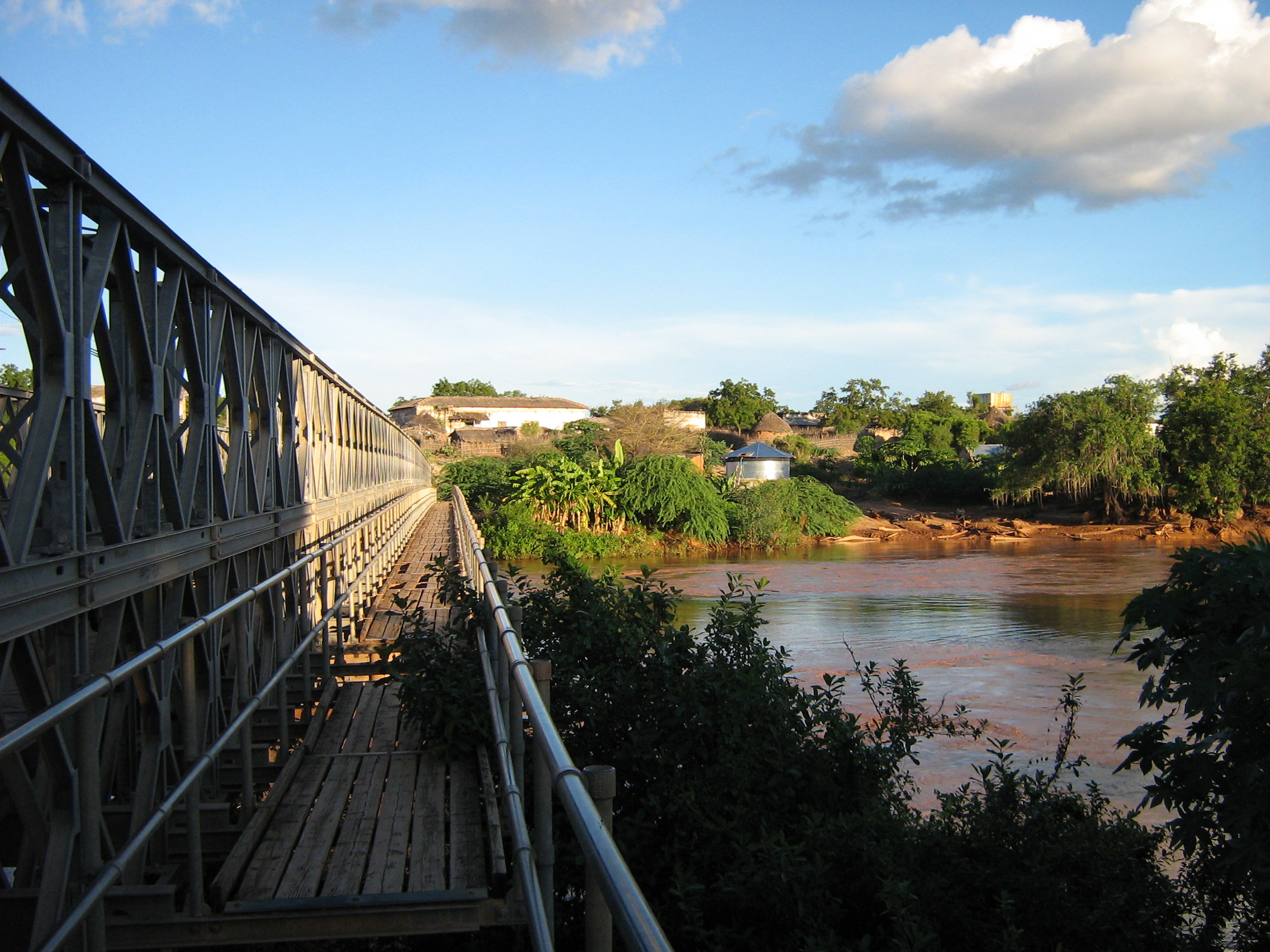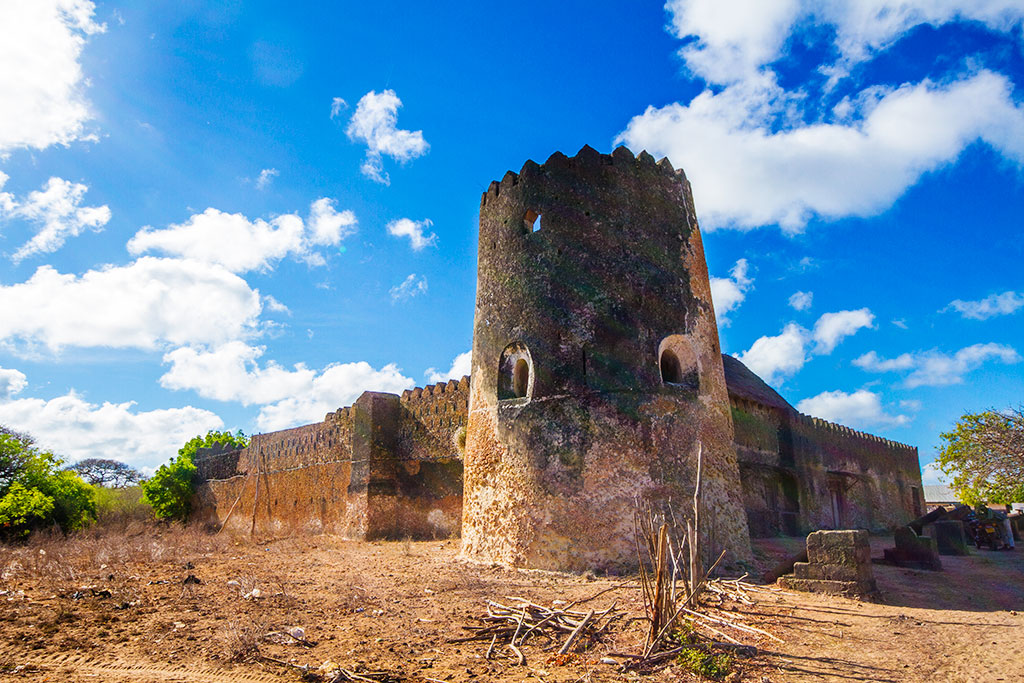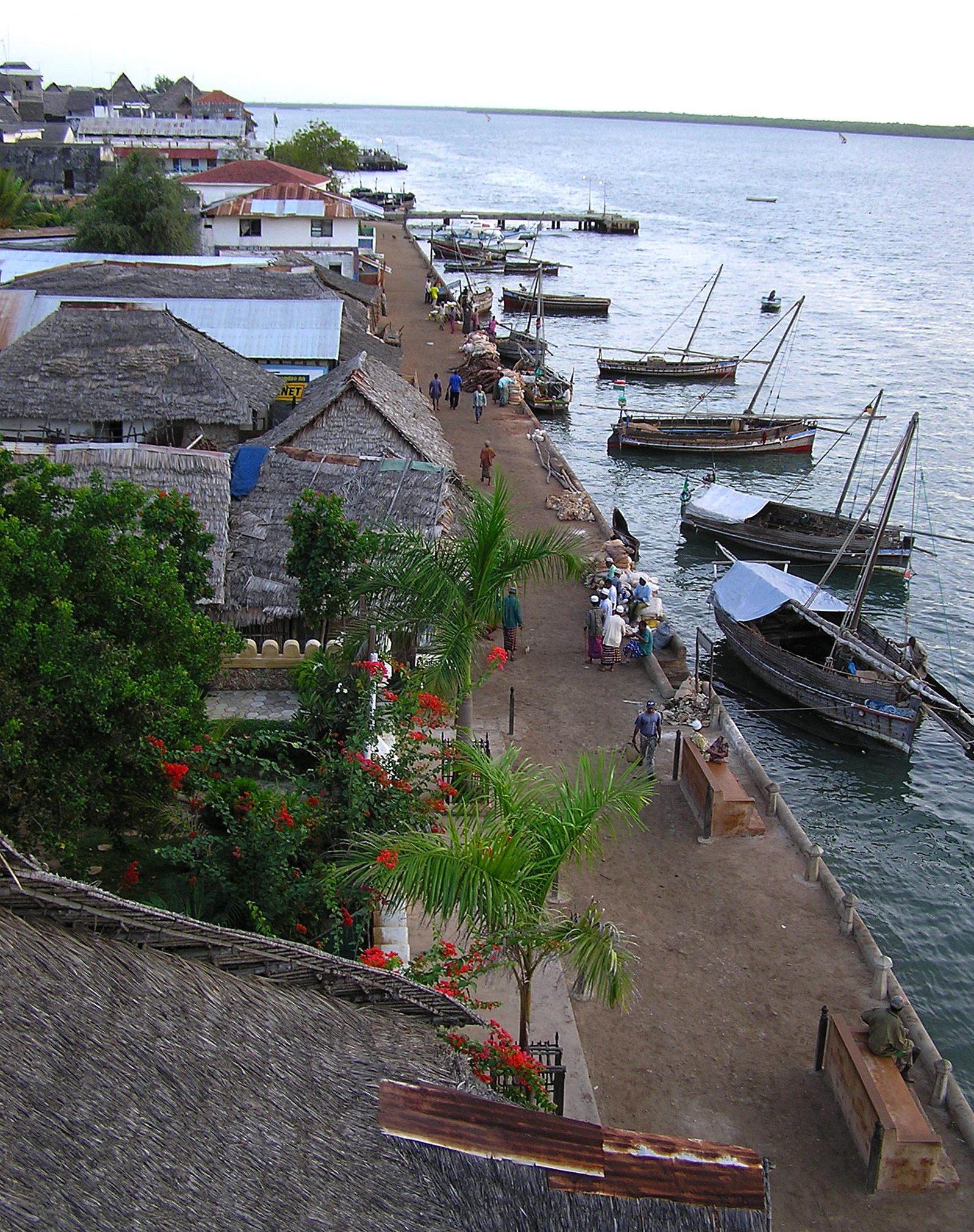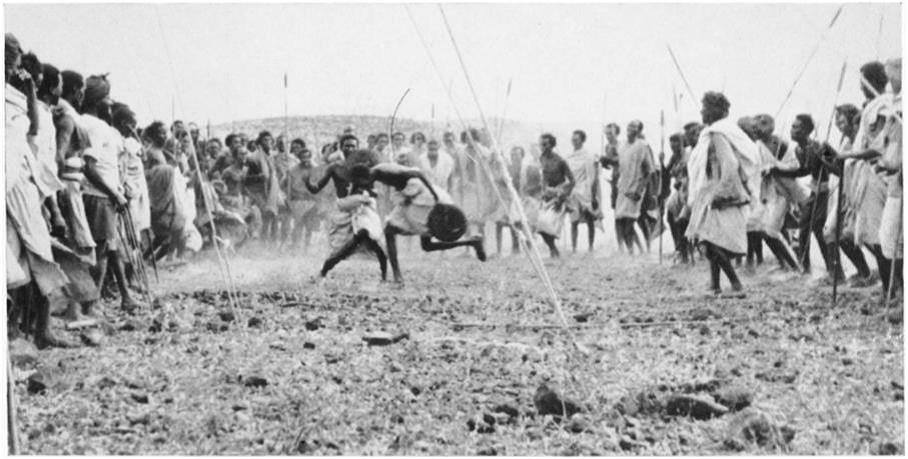|
Yusuf Mahamud Ibrahim
Yusuf Mahamud Ibrahim ( so, Yuusuf Maxamuud Ibrahiim, ar, يوسف محمود ابراهيم) was a Somali people, Somali ruler. He was the third and most powerful Sultan of the Geledi sultanate, reigning from 1798 to 1848. Under the reign of Sultan Yusuf, his kingdom entered its apex, he managed to modernize his economy and his kingdom quickly became one of the wealthiest states in East Africa. Yusuf frequently toured the sultanate and built rapport with his many clients and allies. He successfully consolidated Geledi power during conquest of Bardera and expelling extremist ideology from his region. It was under his rule he manage to establish many trading partners and allies such as the Wituland, Sultanate of Witu. He also exacted tribute from Said bin Sultan, Sultan Said of the Omani Empire starting from 1843. History Early life Yusuf was the son of Sultan Mahamud Ibrahim and as a youth was sent to Barawa to study Islam. Barawa was a renowned hub of the Qadiriyya sufi tariqa i ... [...More Info...] [...Related Items...] OR: [Wikipedia] [Google] [Baidu] |
Sultan
Sultan (; ar, سلطان ', ) is a position with several historical meanings. Originally, it was an Arabic abstract noun meaning "strength", "authority", "rulership", derived from the verbal noun ', meaning "authority" or "power". Later, it came to be used as the title of certain rulers who claimed almost full sovereignty (i.e., not having dependence on any higher ruler) without claiming the overall caliphate, or to refer to a powerful governor of a province within the caliphate. The adjectival form of the word is "sultanic", and the state and territories ruled by a sultan, as well as his office, are referred to as a sultanate ( '. The term is distinct from king ( '), despite both referring to a sovereign ruler. The use of "sultan" is restricted to Muslim countries, where the title carries religious significance, contrasting the more secular ''king'', which is used in both Muslim and non-Muslim countries. Brunei and Oman are the only independent countries which retain the ti ... [...More Info...] [...Related Items...] OR: [Wikipedia] [Google] [Baidu] |
Sheekhaal
The Sheekhaal (var. Sheikhaal ( ar, شيخال), also known as Fiqi Omar, is a Somali clan. They inhabit Somalia, Ethiopia, Djibouti and with considerable numbers also found in the Northern Frontier District (NFD) in Kenya. Overview Sheekhal traces its ancestry to Sheikh Abadir Umar Ar-Rida, also known as ''Fiqi Umar'', who in turn traced his lineage to the first caliph, Abu Bakr (Sayid Abubakar Al-Sadiq). According to the explorer Richard F. Burton, In his book ''First Footsteps in East Africa''. The Sheekhaash or Sheekhaal is described as the only Somalis of the maintains not derived from Dir and Darood. They claim descent from "Caliph Abu Bakr" and asserted that their ancestor Khutab bin Fakih Umar crossed over from Al-Hijaz. Fiqi Umar crossed over from the Arabian Peninsula to the Horn of Africa with his six sons: Umar the Greater, Umar the Lesser, the two Abdillahs, Ahmad and Siddik. Sheikh Ar-Rida is also regarded as the saint of Harar.Siegbert Uhlig, ''Encyc ... [...More Info...] [...Related Items...] OR: [Wikipedia] [Google] [Baidu] |
Bardera
Bardera ( ar, بارديرا, so, Bardhere) is a city in Jubaland State of Somalia. It is the second largest and most populous city in Jubaland with Kismayo being the largest and most densely populated city in the region. Bardera sits on the Jubba River around 250 km west of the city of Baidoa and is in a highland area with fertile soil. The city experiences extremely hot temperatures from December to April and heavy rainfalls from April to May knowns as ''Gu'' (spring) The city was formerly known as the "Onion capital of the World" for its production of the vegetable, the name Bardera means tall palm trees. The palms were cut to construct native homes or ''midille''. Bardhere is also known as the centre of Islamic scholarship, as it is for agricultural production. The climate is ideally suited for year-round crop production and boasts of farms of sorghum, corn, onions, beans, sesame plants, tobacco, and fruits such as bananas, watermelon, oranges, papayas, and mangoes. ... [...More Info...] [...Related Items...] OR: [Wikipedia] [Google] [Baidu] |
Ivory
Ivory is a hard, white material from the tusks (traditionally from elephants) and teeth of animals, that consists mainly of dentine, one of the physical structures of teeth and tusks. The chemical structure of the teeth and tusks of mammals is the same, regardless of the species of origin, but ivory contains structures of mineralised collagen. The trade in certain teeth and tusks other than elephant is well established and widespread; therefore, "ivory" can correctly be used to describe any mammalian teeth or tusks of commercial interest which are large enough to be carved or scrimshawed. Besides natural ivory, ivory can also be produced synthetically, hence (unlike natural ivory) not requiring the retrieval of the material from animals. Tagua nuts can also be carved like ivory. The trade of finished goods of ivory products has its origins in the Indus Valley. Ivory is a main product that is seen in abundance and was used for trading in Harappan civilization. Finished ivor ... [...More Info...] [...Related Items...] OR: [Wikipedia] [Google] [Baidu] |
Siyu
Siyu is a settlement on the north coast of Pate Island, within the Lamu Archipelago in Kenya's Coast Province. The age of Siyu is not known, but it might date from the 13th century.Martin, 1973, p. 23 There are some other accounts that mention Chinese ships of Zheng He's fleet sinking near Lamu Island in Kenya in 1415. Survivors settled on the island and married local women. This has been proven recently by archaeological work on the island that has resulted in the finding of evidence to suggest this connection. Further DNA testing done on some residents from Siyu show that they indeed have Chinese ancestors. Gaspar de Santo Bernadino visited the town in 1606, and stated that it was the largest town on the island. Siyu's main claim to historical fame is that it through several battles withstood the Sultans of Zanzibar. In 1843 the Sheikh of Siyu, Bwana Mataka, and the new Rulers of Pate, Sheikh of Pate, repudiated the sovereignty of Said bin Sultan, Sultan of Muscat and Oman, ... [...More Info...] [...Related Items...] OR: [Wikipedia] [Google] [Baidu] |
Sultanate Of Zanzibar
The Sultanate of Zanzibar ( sw, Usultani wa Zanzibar, ar, سلطنة زنجبار , translit=Sulṭanat Zanjībār), also known as the Zanzibar Sultanate, was a state controlled by the Sultan of Zanzibar, in place between 1856 and 1964. The Sultanate's territories varied over time, and at their greatest extent spanned all of present-day Kenya and the Zanzibar Archipelago off the Swahili Coast. After a decline, the state had sovereignty over only the archipelago and a strip along the Kenyan coast, with the interior of Kenya constituting the British Kenya Colony and the coastal strip administered as a ''de facto'' part of that colony. Under an agreement reached on 8 October 1963, the Sultan of Zanzibar relinquished sovereignty over his remaining territory on the mainland, and on 12 December 1963, Kenya officially obtained independence from the British. On 12 January 1964, Jamshid bin Abdullah, the last sultan, was deposed and lost sovereignty over the last of his dominions ... [...More Info...] [...Related Items...] OR: [Wikipedia] [Google] [Baidu] |
Lamu
Lamu or Lamu Town is a small town on Lamu Island, which in turn is a part of the Lamu Archipelago in Kenya. Situated by road northeast of Mombasa that ends at Mokowe Jetty, from where the sea channel has to be crossed to reach Lamu Island. It is the headquarters of Lamu County and a UNESCO World Heritage Site. The town contains the Lamu Fort on the seafront, constructed under Fumo Madi ibn Abi Bakr, the sultan of Pate, and was completed after his death in the early 1820s. Lamu is also home to 23 mosques, including the Riyadha Mosque, built in 1900, and a donkey sanctuary. History Early history The original name of the town is Amu, which the Arabs termed Al-Amu (آامو) and the Portuguese "Lamon". The Portuguese applied the name to the entire island as Amu was the chief settlement. Lamu Town on Lamu Island is Kenya's oldest continually inhabited town, and was one of the original Swahili settlements along coastal East Africa. It is believed to have been established ... [...More Info...] [...Related Items...] OR: [Wikipedia] [Google] [Baidu] |
Istunka
Istunka, also known as isgaraac, is a festival held annually in Afgooye, Somalia on the Somali new year.Somalia in word and image - Page 23 The tournament was developed during the medieval Ajuran period, and was centralized in the 19th century under the Sultanate of the Geledi. Consisting of several teams engaging each other in mock combat, it is celebrated alongside other ceremonies such as Dabshiid. History The Istunka tournament was developed in the Middle Ages, during the Ajuran period. It was celebrated annually on the Somali new year alongside other festivals such as Nowruz. The martial arts festival later became a centralized tournament under the Sultanate of the Geledi. During the reign of Sultan Ahmed Yusuf, separate teams were established, each supported by an assembly of poets, female vocalists and dance groups throughout the duration of the contest.Lee V. Cassanelli, ''The Shaping of Somali Society: Reconstructing the History of a Pastoral People, 1600-1900'' ... [...More Info...] [...Related Items...] OR: [Wikipedia] [Google] [Baidu] |
Pottery
Pottery is the process and the products of forming vessels and other objects with clay and other ceramic materials, which are fired at high temperatures to give them a hard and durable form. Major types include earthenware, stoneware and porcelain. The place where such wares are made by a ''potter'' is also called a ''pottery'' (plural "potteries"). The definition of ''pottery'', used by the ASTM International, is "all fired ceramic wares that contain clay when formed, except technical, structural, and refractory products". In art history and archaeology, especially of ancient and prehistoric periods, "pottery" often means vessels only, and sculpted figurines of the same material are called "terracottas". Pottery is one of the oldest human inventions, originating before the Neolithic period, with ceramic objects like the Gravettian culture Venus of Dolní Věstonice figurine discovered in the Czech Republic dating back to 29,000–25,000 BC, and pottery vessels th ... [...More Info...] [...Related Items...] OR: [Wikipedia] [Google] [Baidu] |
Jewellery
Jewellery ( UK) or jewelry ( U.S.) consists of decorative items worn for personal adornment, such as brooches, rings, necklaces, earrings, pendants, bracelets, and cufflinks. Jewellery may be attached to the body or the clothes. From a western perspective, the term is restricted to durable ornaments, excluding flowers for example. For many centuries metal such as gold often combined with gemstones, has been the normal material for jewellery, but other materials such as glass, shells and other plant materials may be used. Jewellery is one of the oldest types of archaeological artefact – with 100,000-year-old beads made from '' Nassarius'' shells thought to be the oldest known jewellery.Study reveals 'oldest jewellery' , '' |
Tableware
Tableware is any dish or dishware used for setting a table, serving food, and dining. It includes cutlery, glassware, serving dishes, and other items for practical as well as decorative purposes. The quality, nature, variety and number of objects varies according to culture, religion, number of diners, cuisine A cuisine is a style of cooking characterized by distinctive ingredients, techniques and dishes, and usually associated with a specific culture or geographic region. Regional food preparation techniques, customs, and ingredients combine to ... and occasion. For example, Middle Eastern, Indian or Polynesian food culture and cuisine sometimes limits tableware to serving dishes, using bread or leaves as individual plates. Special occasions are usually reflected in higher quality tableware. Cutlery is more usually known as ''silverware'' or ''flatware'' in the United States, where ''cutlery'' usually means knives and related cutting instruments; elsewhere cutle ... [...More Info...] [...Related Items...] OR: [Wikipedia] [Google] [Baidu] |









